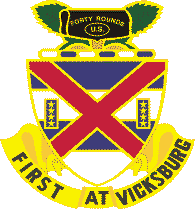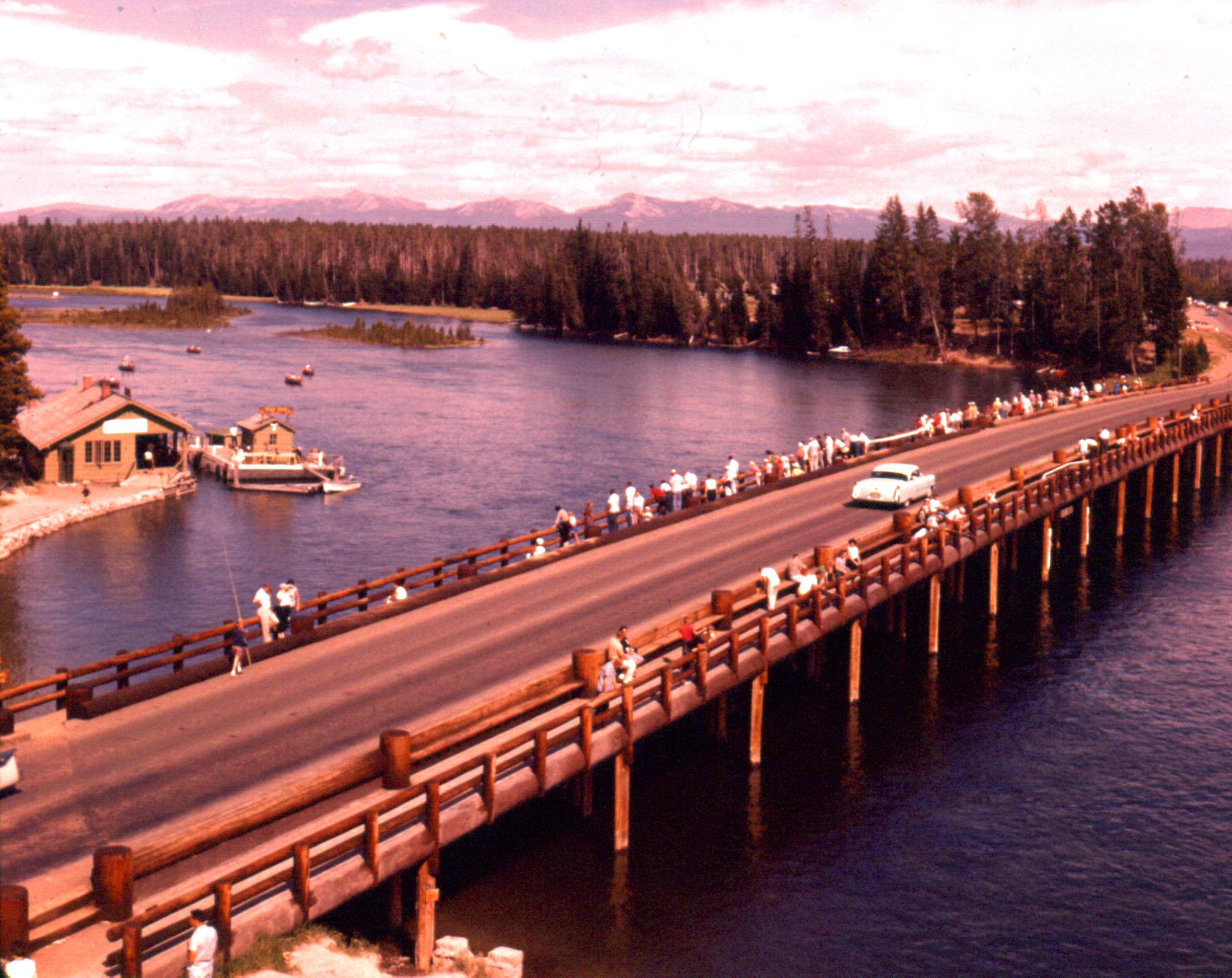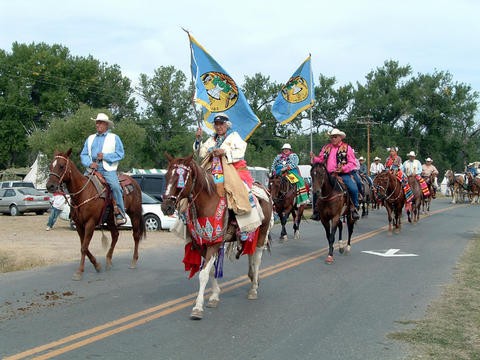|
Montana Territory Volunteer Militia
The Montana Territory Volunteer Militia was a Militia organized in Montana Territory in 1867 as a result of increased incidents with Native Americans. History With sharply increased settlement in Montana Territory at the end of the American Civil War, incidents with Native Americans on Montana's Benton Road and the Bozeman Trail increased dramatically. On May 4, 1867, G. S. Townsend of the U.S. War Department wrote to the acting Territorial Governor of Montana Thomas Francis Meagher on behalf of the U. S. Secretary of War Edwin M. Stanton concerning raising a Montana Territorial Militia: By the end of April 1867, a volunteer militia of 80 men had already been organized, and by the end of May, that number had grown to 150, consisting mostly of mounted horsemen. Acting governor Thomas Francis Meagher commissioned Thomas Thoroughman, an ex-Confederate lieutenant colonel, a brigadier general to command the Montana Militia in spring of 1867, and commissioned Walter W. De Lacy Co ... [...More Info...] [...Related Items...] OR: [Wikipedia] [Google] [Baidu] |
Montana Territory
The Territory of Montana was an organized incorporated territory of the United States that existed from May 26, 1864, until November 8, 1889, when it was admitted as the 41st state in the Union as the state of Montana. Original boundaries The Montana Territory was organized out of the existing Idaho Territory by Act of Congress and signed into law by President Abraham Lincoln on May 26, 1864. The areas east of the Continental Divide had been previously part of the Nebraska Territory and Dakota Territory and had been acquired by the United States in the Louisiana Purchase. The territory also included a portion of the Idaho Territory west of the continental divide and east of the Bitterroot Range, which had been acquired by the United States in the Oregon Treaty, and originally included in the Oregon Territory. The part of the Oregon Territory that became part of Montana had been split off as part of the Washington Territory. The boundary between the Washington Territory and ... [...More Info...] [...Related Items...] OR: [Wikipedia] [Google] [Baidu] |
Sioux
The Sioux or Oceti Sakowin (; Dakota language, Dakota: Help:IPA, /otʃʰeːtʰi ʃakoːwĩ/) are groups of Native Americans in the United States, Native American tribes and First Nations in Canada, First Nations peoples in North America. The modern Sioux consist of two major divisions based on Siouan languages, language divisions: the Dakota people, Dakota and Lakota people, Lakota; collectively they are known as the Očhéthi Šakówiŋ ("Seven Council Fires"). The term "Sioux" is an exonym created from a French language, French transcription of the Ojibwe language, Ojibwe term "Nadouessioux", and can refer to any ethnic group within the Great Sioux Nation or to any of the nation's many language dialects. Before the 17th century, the Dakota people, Santee Dakota (; "Knife" also known as the Eastern Dakota) lived around Lake Superior with territories in present-day northern Minnesota and Wisconsin. They gathered wild rice, hunted woodland animals and used canoes to fish. Wars ... [...More Info...] [...Related Items...] OR: [Wikipedia] [Google] [Baidu] |
13th Infantry Regiment (United States)
The 13th Infantry Regiment ("First at Vicksburg") is a United States Army infantry regiment whose battalions are currently tasked as basic training battalions. History During the first post-war expansion of the United States Army following independence, a 13th Regiment of Infantry was formed on 16 July 1798, and was mustered out 11 January 1800. The second 13th Infantry was constituted 11 January 1812. Following the War of 1812 the 13th Infantry was consolidated on 7 May 1815, with the 4th, 9th, 21st, 40th, and 46th Regiments into a new 5th Infantry Regiment whose lineage continues to the present. A new, third 13th Infantry Regiment was constituted in May 1861 when the Army expanded the Regular Army during the Civil War. General William Tecumseh Sherman was the colonel of the regiment and Philip Sheridan was one of its captains. It was organized as one of the nine "three-battalion" regiments of regulars, each battalion containing eight companies of infantry, in contrast t ... [...More Info...] [...Related Items...] OR: [Wikipedia] [Google] [Baidu] |
7th Infantry Regiment (United States)
The 7th Infantry Regiment is an infantry regiment in the United States Army. In its 200-year history it has participated in 12 wars, been awarded 78 campaign streamers, and 14 unit decorations. The regiment has served in more campaigns than any other infantry unit in the United States Army. It is known as "The Cottonbalers" for its actions during the Battle of New Orleans, while under the command of Andrew Jackson, when soldiers of the 7th Infantry Regiment held positions behind a breastwork of cotton bales during the British attack. These actions and the lineage of other units that made up the 7th Infantry give the regiment campaign credit for the War of 1812. Lineage The regiment's official lineage is as follows: * Constituted 11 January 1812 in the Regular Army as the 8th Infantry * Organized in 1812 in Tennessee, Georgia, and the adjacent territories * Consolidated May–October 1815 with the 24th Infantry (constituted 26 June 1812) and the 39th Infantry (constituted 29 Ja ... [...More Info...] [...Related Items...] OR: [Wikipedia] [Google] [Baidu] |
2nd Cavalry Regiment (United States)
The 2nd Cavalry Regiment, also known as the 2nd Dragoons, is an active Stryker infantry and cavalry regiment of the United States Army. The Second Cavalry Regiment is a unit of the United States Army Europe and Africa, with its garrison at the Rose Barracks in Vilseck, Germany. It can trace its lineage back to the early part of the 19th century. In addition to its two current names, former names are 2nd Riflemen, 2nd Dragoons, 2nd Constabulary Regiment, 2nd Armored Cavalry, 2nd Cavalry (Light), and 2nd Stryker Cavalry. Previous names and dates Previous designations of the regiment: 2nd Regiment of Dragoons (May 1836 – March 1843, April 1844 – August 1861); 2nd Regiment of Riflemen (March 1843 – April 1844); 2nd US Cavalry Regiment (August 1861 – July 1942); 2nd Cavalry Regiment (Mechanized) (January 1943 – December 1943); 2nd Cavalry Group (Mechanized) (December 1943 – July 1946); 2nd Constabulary Regiment (July 1946 – November 1948); 2nd Armored Cavalr ... [...More Info...] [...Related Items...] OR: [Wikipedia] [Google] [Baidu] |
United States Army
The United States Army (USA) is the land service branch of the United States Armed Forces. It is one of the eight U.S. uniformed services, and is designated as the Army of the United States in the U.S. Constitution.Article II, section 2, clause 1 of the United States Constitution (1789). See alsTitle 10, Subtitle B, Chapter 301, Section 3001 The oldest and most senior branch of the U.S. military in order of precedence, the modern U.S. Army has its roots in the Continental Army, which was formed 14 June 1775 to fight the American Revolutionary War (1775–1783)—before the United States was established as a country. After the Revolutionary War, the Congress of the Confederation created the United States Army on 3 June 1784 to replace the disbanded Continental Army.Library of CongressJournals of the Continental Congress, Volume 27/ref> The United States Army considers itself to be a continuation of the Continental Army, and thus considers its institutional inception to be th ... [...More Info...] [...Related Items...] OR: [Wikipedia] [Google] [Baidu] |
Colonel (United States)
The colonel () in the United States Army, Marine Corps, Air Force and Space Force, is the most senior field-grade military officer rank, immediately above the rank of lieutenant colonel and just below the rank of brigadier general. Colonel is equivalent to the naval rank of captain in the other uniformed services. By law, an officer previously required at least 22 years of cumulative service and a minimum of three years as a lieutenant colonel before being promoted to colonel. With the signing of the National Defense Authorization Act of 2019 (NDAA 2019), military services now have the authorization to directly commission new officers up to the rank of colonel. The pay grade for colonel is O-6. When worn alone, the insignia of rank seen at right is worn centered on headgear and fatigue uniforms. When worn in pairs, the insignia is worn on the officer's left side while a mirror-image reverse version is worn on the right side, such that both of the eagles' heads face forwa ... [...More Info...] [...Related Items...] OR: [Wikipedia] [Google] [Baidu] |
Green Clay Smith
Green Clay Smith (July 4, 1826 – June 29, 1895) was a United States soldier and politician. Elected to the Kentucky state house before the American Civil War, he was commissioned as a Union officer when he volunteered, advancing to the rank of brigadier general before he resigned to go to Congress. He was promoted to Major General by brevet on March 13, 1865. He was elected to the US Congress from Kentucky in 1862, representing the Unionist Party and serving until 1866. That year, Smith was appointed as the Territorial Governor of Montana, serving from 1866 to 1869. He returned to Washington, D.C., where he was ordained as a Baptist minister and became active in the temperance movement. Biography Smith was born in 1826 in Richmond, Kentucky to John Speed Smith and his wife Elizabeth Lewis (Clay) Smith (1798-1887) ... [...More Info...] [...Related Items...] OR: [Wikipedia] [Google] [Baidu] |
Fort Benton, Montana
Fort Benton is a city in and the county seat of Chouteau County, Montana, United States. Established in 1846, Fort Benton is the oldest continuously occupied settlement in Montana. The city's waterfront area, the most important aspect of its 19th century growth, was designated the Fort Benton Historic District, a National Historic Landmark, in 1961. The population was 1,449 at the 2020 census. History Established in 1846 by Alexander Culbertson, who worked for Auguste Chouteau and Pierre Chouteau, Jr. of St. Louis, the original fort was the last fur trading post on the Upper Missouri River, Chouteau County Courthouse, 2009 the fort became an important economic center. For 30 years, the port attracted steamboats carrying goods, merchants, gold miners and settlers, coming from New Orleans, Memphis, St. Louis, Hannibal, Bismarck, Kansas City, etc. As the terminus for the 642-mile-long Mullan Road, completed by the United States Army in 1860, and at the head of navigation of ... [...More Info...] [...Related Items...] OR: [Wikipedia] [Google] [Baidu] |
Yellowstone River
The Yellowstone River is a tributary of the Missouri River, approximately long, in the Western United States. Considered the principal tributary of upper Missouri, via its own tributaries it drains an area with headwaters across the mountains and Great Plains, high plains of southern Montana and northern Wyoming, and stretching east from the Rocky Mountains in the vicinity of Yellowstone National Park. It flows northeast to its confluence with the Missouri River on the North Dakota side of the border, about 25 miles west of present-day Williston, North Dakota, Williston. Yellowstone watershed The Yellowstone River watershed is a river basin spanning across Montana, with minor extensions into Wyoming and North Dakota, toward headwaters and terminus, respectively. The Yellowstone Basin watershed contains a system of rivers, including the Yellowstone River, and four tributary basins: the Clarks Fork Yellowstone, Wind River (Wyoming), Wind River and Bighorn River, Tongue River (Mon ... [...More Info...] [...Related Items...] OR: [Wikipedia] [Google] [Baidu] |
Crow Nation
The Crow, whose Exonym and endonym, autonym is Apsáalooke (), also spelled Absaroka, are Native Americans in the United States, Native Americans living primarily in southern Montana. Today, the Crow people have a federally recognized tribe, the Crow Tribe of Montana, with an Indian reservation located in the south-central part of the state. Crow Indians are a Plains tribe, who speak the Crow language, part of the Missouri River Valley branch of Siouan languages. Of the 14,000 enrolled tribal members, an estimated 3,000 spoke the Crow language in 2007. During the expansion into the West, the Crow Nation was allied with the United States against its neighbors and rivals, the Sioux and Cheyenne. In historical times, the Crow lived in the Yellowstone River valley, which extends from present-day Wyoming, through Montana and into North Dakota, where it joins the Missouri River. Since the 19th century, Crow people have been concentrated on their reservation established south of Bill ... [...More Info...] [...Related Items...] OR: [Wikipedia] [Google] [Baidu] |





